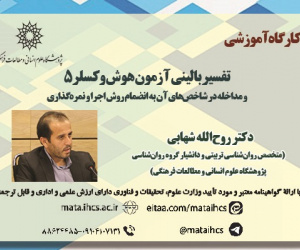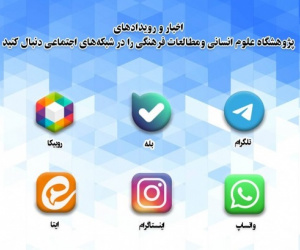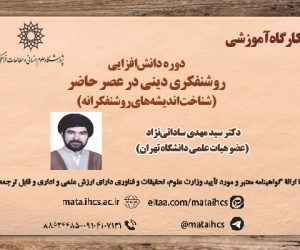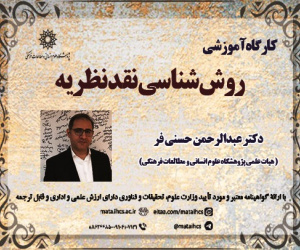تحلیل نشانه شناسانه انیمیشن پهلوانان بر پایه نظریه تفکر انتقادی رابرت انیس (مقاله علمی وزارت علوم)
درجه علمی: نشریه علمی (وزارت علوم)
آرشیو
چکیده
یکی از تولیدات انیمیشنی[i] ایرانی که در راستای تفکر انتقادی و مهارت حل مسئله با ذهنیت انتقادی، مفاهیم، ارزش ها و معناهای ایرانی را بازنمایی کرده، انیمیشن پهلوانان است. در این پژوهش که با هدف شناخت عناصر شاخص تفکر انتقادی در انیمیشن نامبرده به تحریر در آمده، به بررسی نشانه های تفکر انتقادی بر پایه نظریه رابرت اِنیس در یکی از قسمت های این انیمیشن با عنوان طوطی سخنگو پرداخته شده است. پرسشی که در این جستار مطرح است، چگونگی بروز نشانه های تفکر انتقادی انیس در انیمیشن پهلوانان براساس دوگانه نشانه ای دلالت صریح و ضمنی بارت است. با اتکاء به نظریه تفکر انتقادی انیس در انیمشن مورد بحث، دو سطح استدلال و تأمل متناسب با مخاطب هدف آن یعنی کودکان و نوجوانان پررنگ و ملموس و با دلالتی صریح تر است، اما سطح تصمیم گیری با توجه به میزان پردازش ذهنی رده سنی اصلی این انیمیشن، به نسبت دو سطح دیگر تفکر انتقادی انیس از وضوح وشفافیت کمتری ارائه شده است. باتوجه به اهمیت سطح تصمیم گیری در تفکر انتقادی است ابهام یا عدم صراحت آن در این اثر، گونه ای کاستی تلقی شود. [i] معادل فارسی واژه «انیمیشن»، «پویانمایی» است که به دلیل مصطلح بودن انیمیشن در این مقاله نیز از این واژه استفاده شده است.Semiotic Analysis of the "Pahlevanan" Animation Based on Robert Ennis' Critical Thinking Theory
Critical thinking is one of the key topics in character development that helps individuals evaluate data and strengthen logical and illogical thinking. Visual media, especially animation, are recognized as effective platforms for teaching this type of thinking and play an important role in shaping children's perception and creativity. One of the Iranian animated productions that represents Iranian concepts, values, and meanings in line with analytical thinking and problem-solving skills with a critical mindset is the series "Pahlavanan." This research examines the signs of critical thinking based on Robert Ennis's theory in one of the episodes of this animation titled "The Talking Parrot" and seeks to answer the question of how the signs of Ennis's critical thinking manifest in this animation. The aim of this research is to identify the elements of critical thinking in this work as an example of Iranian visual culture and to promote critical discourse among children and adolescents. The results indicate that in this animation, two levels of reasoning and reflection are clearly understandable for the child and adolescent audience, but the decision-making level may be perceived as a shortcoming due to ambiguity and lack of clarity. Keywords: Keywords: Critical thinking, Reflective thinking, Robert Ennis, Pahlavanan animation, The Talking Parrot, Barthes' semiotics Introduction Images, films, animated productions, and their dissemination through various media contain meanings, concepts, symbols, and collective memories that are produced and published for different purposes and applications. In these productions, especially for children and adolescents, there is another function such as the power of analysis, imagination, thinking, and the enhancement of critical thinking in various contexts and narratives. For example, in the social genre of these productions, the creation of mythical characters or heroes and anti-heroes, along with the actions of good and evil and their conflicts, which arise from different cultures, displays another aspect of critical thinking intertwined with elements such as decision-making, reflection, and reasoning. On the other hand, one of the most important discussions in the field of critical thinking that has been addressed by thinkers in the humanities is the importance of educating and familiarizing the child and adolescent age group with this style of thinking. Among them, Robert Ennis is one of the experts in the field of education who has elaborated on this important topic in his proposed model of critical thinking. This research examines the dimensions of critical thinking in one of the episodes of the Pahlavanan animation titled "The Talking Parrot" using a semiotic approach based on Barthes' duality of explicit and implicit signification to outline a suitable policy for constructing a cognitive model and applying it in the field of animation production and the flourishing of this domain. It should be noted that other episodes of this animation are not the subject of discussion. The question posed in this study is how the signs of Ennis's critical thinking manifest in the story of "The Talking Parrot" from the Pahlavanan animation series based on Barthes' theory of explicit and implicit signs. In this research, the collection and categorization of information were conducted using library resources, including Persian and English books, articles, and theses. Additionally, the findings of this research were analyzed using Barthes' semiotic content analysis of the story of "The Talking Parrot" from the Pahlavanan animation in a descriptive, analytical, and interpretive manner, focusing on the signs within the work and based on Robert Ennis's theory. In this process, the authors selected 7 Images from the animation series for analysis. Discussion and Result In the Pahlavanan animation, the three elements of Ennis's critical thinking—reasoning, reflection, and decision-making—are clearly observable. T







